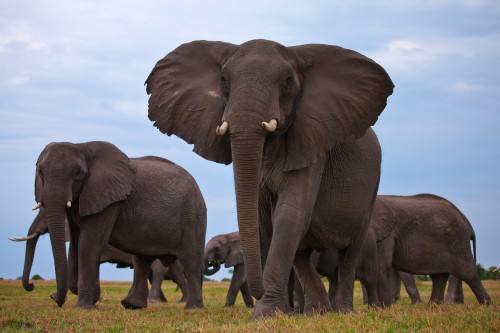On the occasion of International Elephant Day: Will genetic testing succeed in reducing the dimensions of illegal hunting of elephants in Africa?

Dr. Daniel Medar
The African elephant is the largest land animal in the world. The elephant is considered a key species in nature, because it influences the design of the ecosystems in which it is found. Its disappearance from various regions in Africa, for example, brings about a considerable change in those regions, and among other things, the disappearance of other species. These ecological damages also cause economic damages in African countries, the biggest of which is the damage to tourism, which is so important to these countries.
Every year about 50 thousand elephants are hunted illegally, mainly for the ivory of their tusks (ivory is used as a source of medicine in East Asia as well as raw material for art objects, furniture, etc.). Today, there are less than 500 elephants left in Africa, and a poaching rate of 10 percent means the population is expected to collapse in less than a decade.
Elephant. Photo: RayMorris1.flickr
African elephants. Photo: RayMorris1.flickr
In a new study, genetic mapping of elephant populations across Africa was carried out. At the same time, genetic tests were conducted for ivory shipments that were sent and seized in East Asia and also in African countries, before being transferred to East Asia. A comparison between these two maps makes it possible to outline the hunting areas, the smuggling routes and the destinations of the illegal ivory trade. The study found that when traders and poachers want to replenish ivory shipments, they usually return to the same areas where they previously operated to poach more elephants.
Also, the ivory is usually not sent to Asia from the same country in Africa where the elephants were hunted, but from another destination. This is a tactic designed to reduce the risks of the poaching and smuggling networks: if a poacher is caught in Kenya, it will be difficult to track down his dealer in Tanzania, for example. The use of this information requires close cooperation between the various countries in Africa in order to effectively reduce hunting and trade.
The most significant discovery of the study is that most of the illegal hunting of elephants in the last decade takes place in only two areas: forest elephants are hunted in the area between Gabon and Congo, and savannah elephants are hunted mainly in Tanzania. It is likely that internal corruption in these key countries allows trade to flourish for a decade in a row. The meaning is that with the help of a focused effort it will be possible to significantly reduce the hunting in those areas and thus severely damage the world trade in ivory.
It is understood that if this happens the hunters and traders will turn to other areas, but since it is clear that they are very fixed in their hunting areas and smuggling routes (knowing the areas, using local corruption), it will take them a long time to establish new and efficient smuggling routes.
The results of the study also prevent the problematic key countries from denying that they have a problem. This way it will be easier to influence them to cooperate in the international efforts to preserve the elephants.

5 תגובות
137 (not 1370)
50000 / 365 = 137
Even without the exaggeration of a "calculator" this is a huge number...
50,000 elephants a year means that every day on average 1,370 elephants are hunted.
Incomprehensible.
Another dentist-hunter from America and we are lost